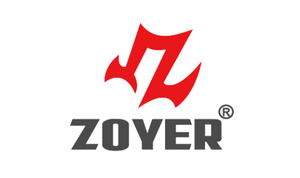Lifting weights with your legs, particularly through exercises like squats, deadlifts, and lunges, is essential for building strength and power in the lower body. However, proper technique is crucial to avoid injuries and maximize the effectiveness of your workouts. Here’s a comprehensive guide to safely lifting weights with your legs:
1. Proper Technique and Form
Squats:
- Stance: Stand with your feet shoulder-width apart. Your toes can point slightly outward if that feels more comfortable.
- Movement: Initiate the squat by pushing your hips back and bending your knees. Keep your chest up and your back straight. Lower yourself until your thighs are parallel to the ground or slightly below.
- Execution: Push through your heels to return to the starting position. Avoid letting your knees collapse inward or extending them past your toes.
Deadlifts:
- Stance: Stand with your feet hip-width apart, with the barbell close to your shins.
- Grip: Bend at the hips and knees to grip the barbell with an overhand grip or mixed grip (one hand overhand, one underhand).
- Movement: Keep your back flat and your chest up as you lift the bar by extending your hips and knees. The bar should stay close to your body throughout the lift.
- Execution: Lower the bar back to the ground with control, maintaining a flat back and avoiding rounding your spine.
Lunges:
- Stance: Stand with your feet hip-width apart. Take a step forward with one leg.
- Movement: Lower your hips by bending both knees until your back knee nearly touches the ground and your front thigh is parallel to the floor. Your front knee should not extend beyond your toes.
- Execution: Push through your front heel to return to the starting position. Alternate legs for each rep.
2. Warm-Up and Flexibility
Warm-Up:
- Perform a general warm-up, such as light cardio (e.g., jogging or cycling) for 5-10 minutes to increase blood flow to your muscles.
- Do dynamic stretches or mobility exercises specific to your lower body to prepare your muscles and joints for the workout.
Flexibility:
- Incorporate stretching exercises for your legs and hips to improve flexibility and range of motion. This can enhance your lifting form and reduce the risk of injury.
3. Use Appropriate Weight and Progress Gradually
Start Light:
- Begin with lighter weights to master your form before progressing to heavier loads. Focus on technique and controlled movements.
Gradual Increase:
- Gradually increase the weight as you build strength and confidence. Avoid making large jumps in weight, which can lead to poor form and potential injury.
4. Listen to Your Body
Avoid Pain:
- Pay attention to any pain or discomfort. A slight muscle burn is normal, but sharp or severe pain may indicate improper form or an injury.
Rest and Recovery:
- Allow adequate recovery time between leg workouts to avoid overtraining. Rest and proper nutrition are essential for muscle repair and growth.
5. Strengthen Supporting Muscles
Core Strength:
- A strong core supports your lower body and helps maintain proper alignment during lifts. Incorporate core exercises like planks and leg raises into your routine.
Balance and Stability:
- Work on exercises that improve balance and stability, such as single-leg deadlifts and balance exercises, to enhance your overall strength and reduce the risk of injury.
6. Use Proper Equipment
Footwear:
- Wear supportive shoes with a firm, flat sole for stability during lifting. Avoid cushioned or running shoes, which can reduce balance and stability.
Equipment:
- Use lifting belts, knee sleeves, or other supportive gear if needed, but avoid relying on them excessively. Proper technique should be the primary focus.
7. Cool Down and Stretch
Cool Down:
- After your workout, engage in light cardio and stretching to help your muscles recover and reduce stiffness.
Stretching:
- Perform static stretches targeting your quads, hamstrings, glutes, and calves to maintain flexibility and reduce muscle soreness.
Conclusion
Lifting weights with your legs can be highly effective for building lower body strength, but it requires careful attention to technique, gradual progression, and proper recovery. By focusing on correct form, warming up, and listening to your body, you can minimize the risk of injury and maximize the benefits of your leg workouts.


